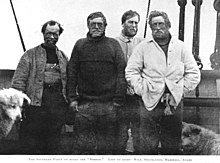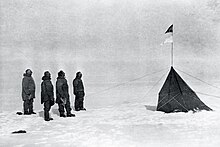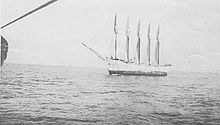Thursday, July 23, 2020
Saturday, April 25, 2020
Antarctica - the loneliest continent
Antarctica is Earth's southernmost continent. It contains the geographic South Pole and is situated in the Antarctic region of the Southern Hemisphere, almost entirely south of the Antarctic Circle, and is surrounded by the Southern Ocean. At 14,200,000 square kilometres (5,500,000 square miles), it is the fifth-largest continent and nearly twice the size of Australia. At 0.00008 people per square kilometre, it is by far the least densely populated continent. About 98% of Antarctica is covered by ice that averages 1.9 km (1.2 mi; 6,200 ft) in thickness, which extends to all but the northernmost reaches of the Antarctic Peninsula.
Antarctica, on average, is the coldest, driest, and windiest continent, and has the highest average elevation of all the continents. Most of Antarctica is a polar desert, with annual precipitation of 200 mm (7.9 in) along the coast and far less inland; there has been no rain there for almost 2 million years, yet 80% of the world freshwater reserves are stored there, enough to raise global sea levels by about 60 m (100 ft) if all of it were to melt. The temperature in Antarctica has reached −89.2 °C (−128.6 °F)
The long-imagined (but undiscovered) south polar continent was originally called Terra Australis, sometimes shortened to 'Australia' as seen in a woodcut illustration titled Sphere of the winds, contained in an astrological textbook published in Frankfurt in 1545.[17] Although the longer Latin phrase was better known, the shortened name Australia was used in Europe's scholarly circles.
Then in the nineteenth century, the colonial authorities in Sydney removed the Dutch name from New Holland. Instead of inventing a new name to replace it, they took the name Australia from the south polar continent, leaving it nameless for some eighty years. During that period, geographers had to make do with clumsy phrases such as "the Antarctic Continent". They searched for a more poetic replacement, suggesting various names such as Ultima and Antipodea.[18] Eventually Antarctica was adopted in the 1890s.Image of the largest Antarctic ever recorded due to CFCsaccumulation (September 2006)
Main article: Ozone depletion
There is a large area of low ozone concentration or "ozone hole" over Antarctica. This hole covers almost the whole continent and was at its largest in September 2008, when the longest lasting hole on record remained until the end of December.[173] The hole was detected by scientists in 1985[174]and has tended to increase over the years of observation. The ozone hole is attributed to the emission of chlorofluorocarbons or CFCs into the atmosphere, which decompose theozone into other gases.[175] In 2019, the ozone hole was at its smallest in the previous thirty years, due to the warmer polar stratosphere weakening the polar vortex. This reduced the formation of the 'polar stratospheric clouds' that enable the chemistry that leads to rapid ozone loss.[176]
Some scientific studies suggest that ozone depletion may have a dominant role in governing climatic change in Antarctica (and a wider area of the Southern Hemisphere).Ozone absorbs large amounts of ultraviolet radiation in the stratosphere. Ozone depletion over Antarctica can cause a cooling of around 6 °C in the local stratosphere. This cooling has the effect of intensifying the westerly winds which flow around the continent (thepolar vortex) and thus prevents outflow of the cold air near the South Pole. As a result, the continental mass of the East Antarctic ice sheet is held at lower temperatures, and the peripheral areas of Antarctica, especially the Antarctic Peninsula, are subject to higher temperatures, which promote accelerated melting. Models also suggest that the ozone depletion/enhanced polar vortex effect also accounts for the recent increase in sea ice just offshore of the continent.
Other prominent news

Sunday, April 19, 2020
The mystery of Bermuda triangle
Paranormal explanations
Triangle writers have used a number of supernatural concepts to explain the events. One explanation pins the blame on leftover technology from the mythical lost continent of Atlantis. Sometimes connected to the Atlantis story is the submerged rock formation known as the Bimini road off the island of Bimini in the Bahamas, which is in the Triangle by some definitions.
Natural explanations
Compass variations
Compass problems are one of the cited phrases in many Triangle incidents. While some have theorized that unusual local magnetic anomalies may exist in the area, but such anomalies have not been found.
Ellen Austin
The Ellen Austin supposedly came across a derelict ship, placed on board it a prize crew, and attempted to sail in tandem with it to New York in 1881. According to the stories, the derelict disappeared; others elaborating further that the derelict reappeared minus the prize crew, and then disappeared again with a second prize crew on board.
USS Cyclops
The incident resulting in the single largest loss of life in the history of the US Navy not related to combat occurred when the collierCyclops, carrying a full load of manganese ore and with one engine out of action, went missing without a trace with a crew of 309 sometime after March 4, 1918, after departing the island of Barbados.
Carroll A. Deering
A five-masted schooner built in 1919, Carroll A. Deering was found hard aground and abandoned at Diamonds shoals, near Cape Hatteras, North Carolina, on January 31, 1921.
So how was my post
Please tell me in the comments
For more astonishing contents please follow my page



















